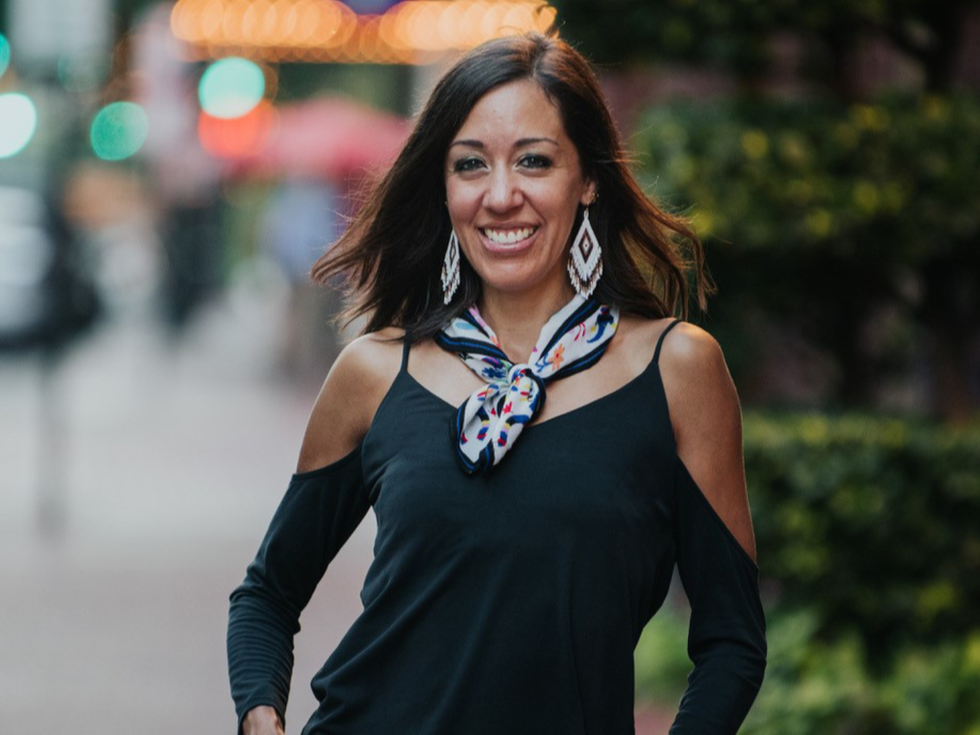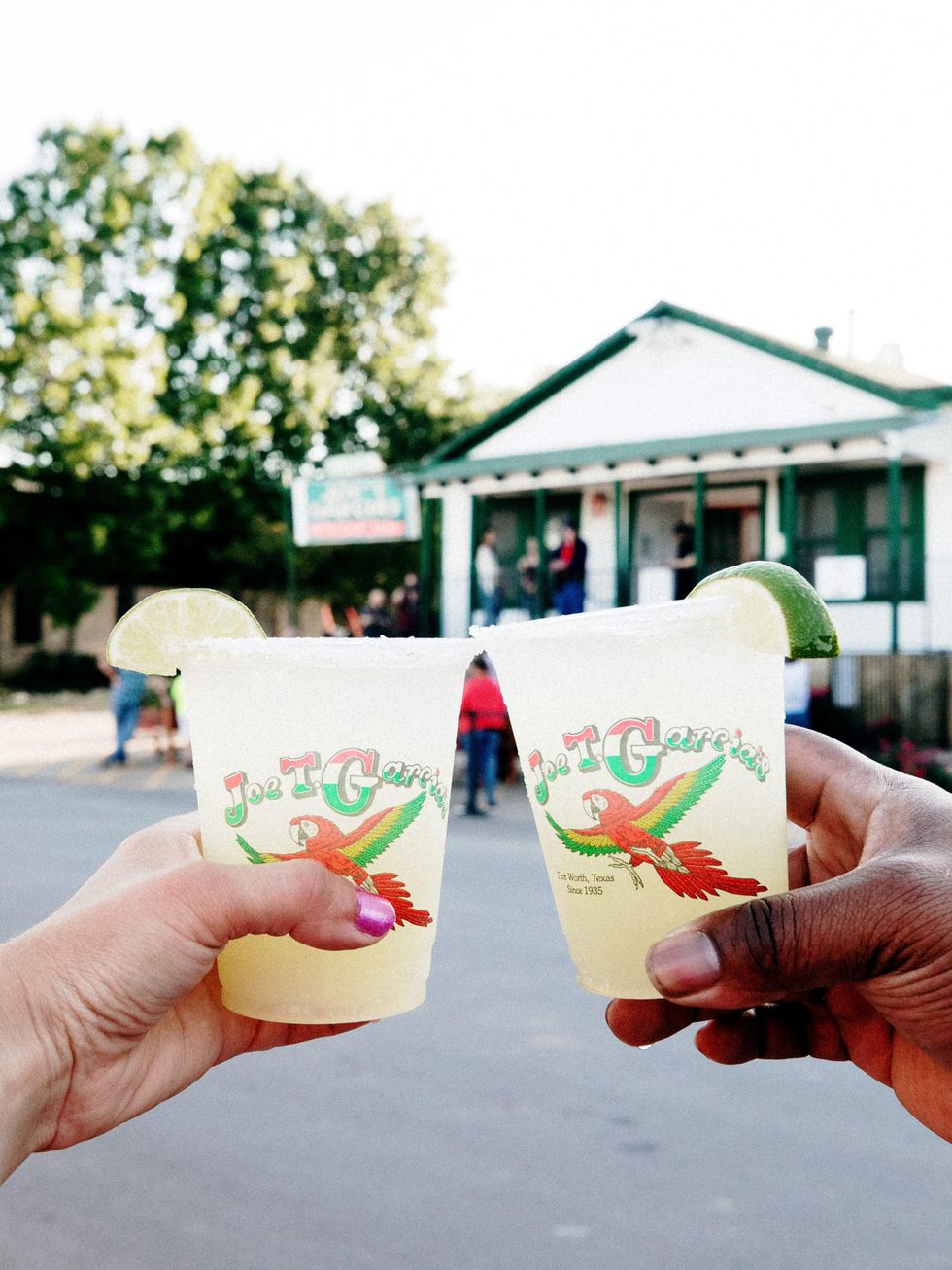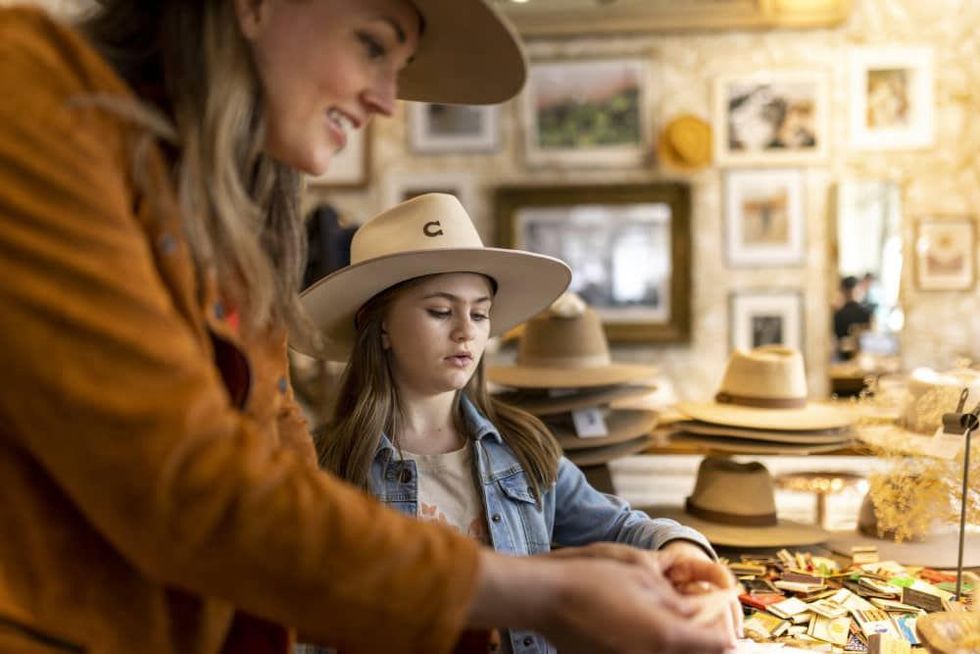Bucket-list book
Fort Worth author’s new book compiles ultimate bucket list of 100 things to do in Cowtown

100 Things to Do in Fort Worth Before you Die will be released on September 25.
If you’re out of ideas of things to do in Fort Worth, one local author has you covered. Celestina Blok has compiled her top recommendations in her new book, 100 Things to Do in Fort Worth Before You Die.
Blok, a third generation Fort Worth native and TCU alumna, has written about Fort Worth for almost 20 years. She is the author of Lost Restaurants in Fort Worth, which was published in 2017. She is also a regular CultureMap contributor.
Her new title, which releases Sept. 25, is part of the “100 Things to Do Before You Die” series (Reedy Press, $18).
The author says she’s seen the city evolve a lot over the years, and her new book describes both new and old attractions meant to entertain both Fort Worth locals and visitors. The 160-page book is broken down into chapters, separating activities into the categories of food and drink, music and entertainment, outdoors and recreation, culture and history, and shopping and fashion. The book will be available in all stores where books are sold.
We chatted with Blok about her love of Fort Worth and her memories at some of the attractions listed in her book.
This conversation has been edited for length and clarity.
CultureMap: As a third generation Fort Worth native, what’s your favorite thing about the city?
Celestina Blok: There’s a motto or a saying I’ve heard over the years that Fort Worth is “the biggest little small town in Texas.” I actually refer to that in the book a little bit, and that’s something I think remains true. As fast as the city is growing, it’s so friendly. And people always comment on that. I hear that a lot that “everyone’s just so nice and polite” and really that’s one of my favorite things about Fort Worth.

CM: Fort Worth is the 12th largest city in the U.S., but I know some locals say it still gets overshadowed by Dallas. Was this part of the reason you wanted to spotlight all the great things to do in Fort Worth?
CB: I always love spotlighting Fort Worth. As you said, folks either don’t realize Fort Worth is as big as it is or has as much to offer as it does, or they think it is Dallas. They loop it in with Dallas. Anyone who is here either their whole life or just here for five minutes, quickly realizes that Fort Worth is not Dallas, and Dallas is not Fort Worth. They’re both great cities, but there’s just definitely a different vibe, a more laid back vibe, and maybe a little bit more slower pace in Fort Worth. I’m hoping that the book opens the eyes of not only visitors here but locals of how much there really is to do here — even beyond the flashy and new that we always kind of seek out. There’s so much that’s tried and true that has been here for decades that we may have forgotten about.
CM:What was your process for narrowing your list down to just 100 things to do?
CB: Initially, when I told folks I was writing this book, some even said, “How are you going to find 100 things to do in Fort Worth? Are you going to expand beyond the city?" From the beginning, I said, “No, I know that there are at least 100 must-do activities here in Fort Worth.” And so, sure enough at the end of my writing, I did have to weed out some places that I don’t want to say “didn’t make the list” but maybe just weren’t a fit.
The book is broken out to chapters, so that further helps me narrow it down. It’s not just what I perceive as 100 things to do in Fort Worth, but it’s broken out by culture and history, music and entertainment, outdoors and recreation, and food and drink. For my own process, I really just tried to think about places that are iconic, that you may not go to every weekend, but you have to do it at least once. Just as the book says — it’s something to do before you die.
CM: You mentioned in your book that some of the activities have been around for decades but may have gotten lost in the limelight of newer attractions. Are there any activities in the book that you think locals specifically should revisit?
CB: A couple of examples are forms of entertainment. When we go to the movies or we go bowling, everything is flashy and new. The movie theaters have cushy lounge chairs that might recline and are maybe even heated, and you may have service at your seat. And there’s just some nostalgic places that have been around that are like a step back in time.
One of those is Downtown Cowtown at the Isis theater. This theater is nearly 100 years old, and it was restored. It is so amazing to go there. The seating is like classic movie theater seating, and everything they show is classic films, even like the '80s. I could go in there and take my son to see Teenage Mutant Ninja Turtles or something like that. What’s so fun and cool about that place is that if you are the first one there before a screening time, you get to pick the movie that comes on. And it’s free. All they ask is that you buy a snack and a drink, and they have a full bar.
Another example is bowling. I mention in the book that there’s a place called Cowtown Bowling Palace. That place has been there since the 50s. You walk in, and it’s just like a classic bowling alley. Even if you go just once to bowl a game with friends or family, it’s definitely a memorable time.

CM: Can you tell me about the appeal of waiting in line at Joe T.’s, and do you remember the first time you went? (See page 2 of 100 Things to Do in Fort Worth Before You Die.)
CB: Oh gosh, I probably went when I was like a kid or a teenager. But this specific thing is to wait in line with a margarita at Joe T. Garcia’s. Anyone who’s from here or has been in Fort Worth for even a small amount of time knows that that’s a thing to do and it’s almost like a rite of passage.
It is definitely a scene, just like Franklin’s Barbecue in Austin is a scene, that line goes for blocks. Even if you do it just once just to experience that there’s this many people in line for this beautiful patio. You can go up, and get a pitcher of margaritas, and share a pitcher or two in line before you get to the front. Not every city has that. So it’s something to experience, whether you do it every weekend or at least once. Especially on a pretty day. And the margaritas help.

CM: When did you learn the origin of calf fries at Riscky’s Steakhouse? Were you turned off or was it something already on your bucket list to try? (See page 25.)
CB: My first book was called Lost Restaurants of Fort Worth, and in that book I cover restaurants that have been long gone. And there’s this place called Theo’s in the Stockyards, and history has it that that is the first restaurant that ever put calf fries on the menu. That place is home to Riscky’s Steakhouse today. If you’re from Fort Worth or not, you may or may not know what calf fries are. Once you find out, you’re like “oh okay, that’s interesting. Restaurants have that on the menu?” It was once actually considered a delicacy, and it still kind of is because you’ll find it on high end restaurants menus. But that venue is the first place that had them on the menu, so it’s just an interesting note. Even if you don’t order the calf fries, go check out that Steakhouse.
CM: Do you have a favorite childhood haunt that made it into the book?
CB: Every Sunday morning after church, my family and I would go to Esperanza’s, which is the sister restaurant to Joe T. Garcia’s. We would have breakfast there or brunch. They have a Mexican bakery connected to the restaurant there, and it is like a frenzy on Sunday mornings. Folks are in there in line ordering all their Mexican baked goods and pastries called pan dulce. It is a scene, and that is something I grew up doing.
Just to experience an authentic taste of Fort Worth that may be a little bit out of the norm is to go to that specific location and witness the tradition folks have every Sunday morning with getting that bread or those pastries and taking them back to their families. That’s exactly what we did. We would go pick it up and take it to my grandma’s house.
CM: So Oktoberfest is almost here, and it’s also one of the activities in your book. What sets Oktoberfest Fort Worth apart from other Oktoberfest events? (See page 70.)
CB: I included that particular event in the book because again, I don’t know that a lot of people realize we have our own Oktoberfest event here and how extensive it is. It’s a three-day event, it’s on the Trinity River — this year’s event has a new location, but it’s still on the Trinity River. There’s Oktoberfest events all over town. You have the stein-holding competitions, you have the German food, you have the polka dancing and live music, you have the food.
The Fort Worth version is just something in our backyard, it draws a lot of people, and it’s just a really fun time especially to experience a little bit of that taste of German culture. I think it’s worth going to at least once. It’s never a bad time, even if you’re just going to get a Bavarian pretzel or have dinner or get some German beer. It’s always a fun time, and it’s super family friendly.

CM: You also recommend visiting the waterfalls at Marion Sansom Park. I didn’t know Fort Worth has waterfalls until I read your book. Is it a hidden secret or am I just out of the loop? (See page 73.)
CB: I think for a lot of people, it is a hidden secret. These are not towering, mountainous, cascading waterfalls that we may see in movies or whatnot. But there are waterfalls that are at the bottom of this beautiful hiking trail that a lot of people bike as well. Even if you don’t make it all the way down to the bottom, it’s a very peaceful, hidden hike that can be pretty easy or you can make it challenging.
When you pull up, you’ll see that there’s a lot of people who do know about it, but it’s not something that may be at the top of everyone’s radar. Sansom Park has been there for many, many years. Folks that know it go regularly, and some are just now discovering it. My family did it a lot during the Covid shutdown. When businesses were closed, school was out, work was closed, folks were looking to get outside. So that was one of our regular spots.
CM:The last item on your list is to get a custom-shaped cowboy hat. When did you get your first, and do you think this is an activity for locals or should visitors go ahead and cross that off the list right away? (See page 130.)
CB: I think that locals more than likely are going to be invited to or attend an event where a custom-shaped cowboy hat or a cowboy hat of any kind is appropriate or even expected. It’s not like it’s a requirement, but it’s definitely something that you would have great use of if you did have one.
For tourists, that may be at the top of their list, as well — “I went to Fort Worth, and I got a cowboy hat!” We have so many great hat retailers here. And it may not even be that you’re getting a cowboy hat. Maybe you’re getting a fedora or some other type of hat, but because we have so many great custom hat outfitters, the options of getting a hat are something everyone should do at least once. And you’ll have it the rest of your life.

CM: What’s the biggest thing that makes Fort Worth unique and fun that you wanted to convey with this book?
CB: I think that as fast as the city is growing, there is still a lot of tradition that is maintained here. A lot of iconic places that are mainstays even amid everything that is growing so quickly. There’s a pride in that, as well.
As I mentioned before, a lot of Fort Worthians do pride themselves on being super friendly and polite. That is something that really sets the city apart from other rapidly growing metropolitan areas. That Fort Worth-friendly vibe.
To learn more about the activities described in “100 Things to Do in Fort Worth Before You Die,” as well as book signings and events, follow @100thingsfortworth on Instagram.
